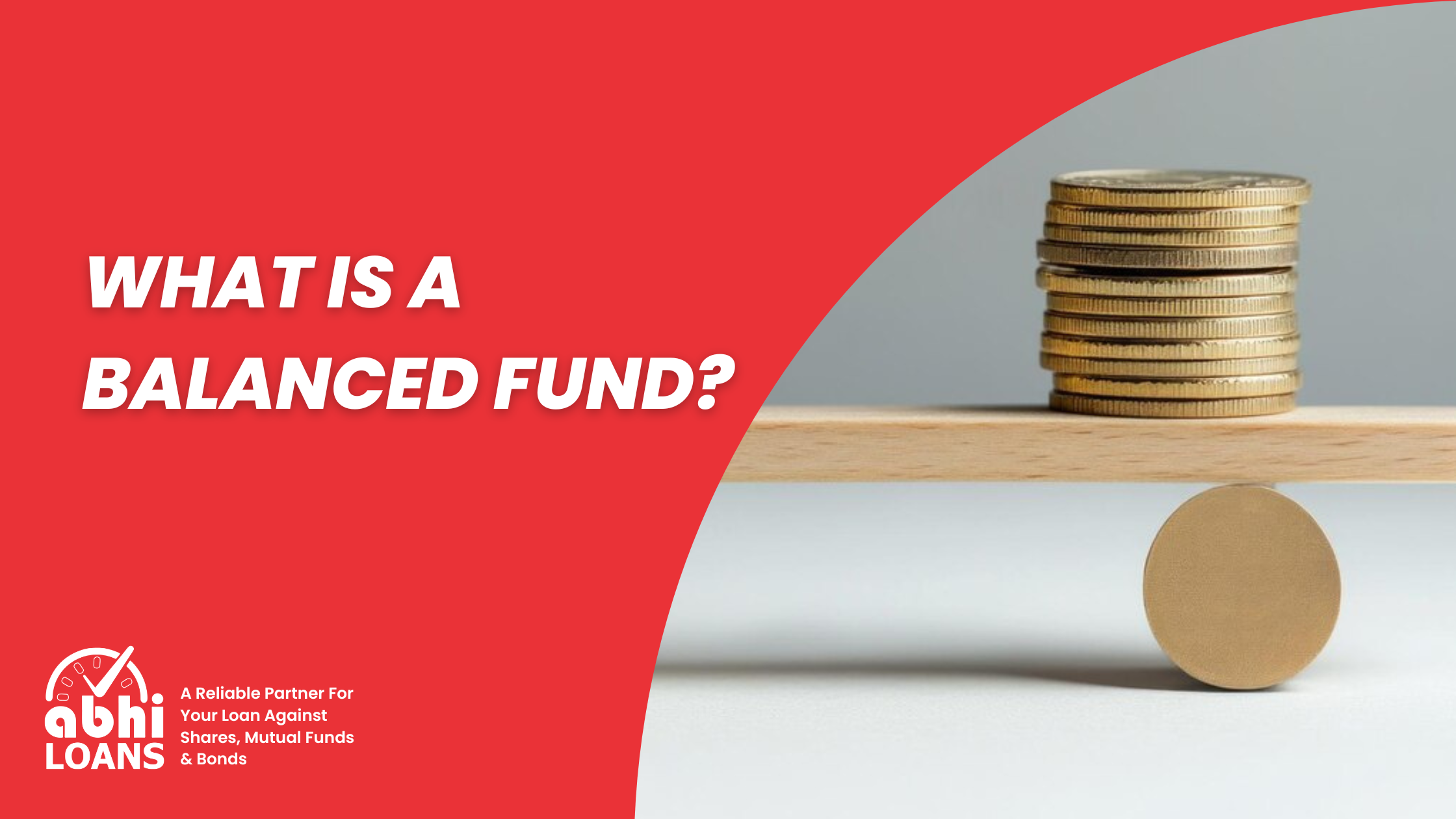What is a Balanced Fund? | Meaning and Advantages
Investing in funds is all about finding the perfect equilibrium between risk and return. For many investors, striking the right balance is not just essential—it’s the cornerstone of a successful investment strategy. This is in which a Balanced Fund comes into the photo. A balanced fund, also called a hybrid fund, is a form of mutual fund that gives a combination of both equity and debt investments.
This aggregate aims to provide boom via equities and stability through debt gadgets, making it a famous preference for buyers searching for capital appreciation and reduced volatility. In this blog, we can explore what a balanced mutual fund is, its functions, and delve into the specifics of the way a balanced advantage fund works.
What is a Balanced Mutual Fund?
A Balanced Mutual Fund is a sort of investment that allocates its assets among equities (stocks) and glued-earnings securities (bonds). The fund manager keeps a balance between excessive-threat, high-praise equity investments and low-threat debt investments to provide a mixture of capacity increase and earnings.
For example, a standard balanced fund would possibly have a 60-40 allocation, in which 60% of the portfolio is invested in equities, and 40% in debt instruments like bonds or government securities. This strategy facilitates lowering the general hazard even as it nonetheless supplies the capability for mild returns over the years.
Balanced funds are normally appropriate for conservative or moderate danger-tolerant traders who are looking for constant growth without exposing their capital to extreme market fluctuations.
Features of a Balanced Fund
Balanced funds include diverse capabilities that distinguish them from different styles of mutual budgets. Here are the key capabilities of a balanced fund which you ought to recognize:
1. Diversification: Balanced finances provide inherent diversification via investing in each fairness and debt. This diversification helps in spreading the chance across multiple asset lessons. When the inventory marketplace is unstable, the debt portion offers stability, and whilst the market is bullish, the fairness element offers capacity capital growth.
2. Moderate Risk: As balanced funds spend money on each equity and debt, they arrive with a moderate chance. The risk is decreased than natural equity funds but higher than constant-profits or debt price range. Investors with a mild hazard appetite can enjoy the balanced chance-return ratio that these finances offer.
3. Steady Returns: Balanced budget goal to provide rather regular returns over a long time. While they will not supply the high returns of competitive fairness finances, they generally outperform pure debt finances and are much less risky than equity-centred investments.
4. Asset Allocation Flexibility: The fund supervisor has the flexibility to adjust the asset allocation between equity and debt primarily based on marketplace situations. This means that the supervisor can increase the equity element at some point in bullish markets to maximize gains and reduce it for the duration of bearish phases to minimize risks.
5. Capital Preservation: Unlike natural equity finances, balanced funds provide a degree of capital preservation because of their debt aspect. This makes them appealing to traders who need to grow their wealth while defending their investments from massive losses during marketplace downturns.
6. Regular Income: The debt portion of the balanced fund generates normal profits in the form of interest payments or dividends, which can be particularly beneficial for conservative buyers in search of constant profit circulation.
How Balanced Advantage Fund Works
Balanced gain funds are a subcategory of a balanced mutual price range, also called dynamic asset allocation finances. These price ranges provide even extra flexibility in coping with the asset allocation among equity and debt, making them greater attentive to changing marketplace situations.
Let’s explore how a balanced gain fund works:
1. Dynamic Asset Allocation
The Balanced benefit price range uses a dynamic asset allocation method to shift between fairness and debt in response to market tendencies. For example, if the inventory marketplace is overestimated, the fund manager would possibly reduce the equity publicity and increase the debt allocation. Conversely, at some point in a marketplace downturn, the fund might also boost the equity exposure to capitalize on decreased valuations.
2. Active Management
Unlike conventional balanced finances, balanced gain price ranges are actively managed to optimize returns while dealing with dangers. The fund manager uses valuation models and market signs to make informed choices about adjusting the portfolio’s asset allocation.
3. Risk Mitigation
By continuously rebalancing the portfolio based totally on marketplace situations, balanced advantage funds aim to mitigate risks. This approach helps in minimizing capability losses through market corrections or downturns while ensuring growth at some stage in favourable market situations.
4. Tax Efficiency
Many balanced advantage funds goal to preserve a minimum 65% fairness exposure to enjoy the tax remedy of equity-oriented mutual price range. This makes them tax-efficient as compared to natural debt funds, where returns are taxed as per the income tax slab of the investor.
What is a Balanced Fund Ideal for?
Now that you apprehend what’s a balanced mutual fund and how it works, let’s explore who can benefit from this type of investment:
1. Conservative Investors Seeking Growth
Balanced price ranges are perfect for conservative traders who want publicity in the stock marketplace but aren’t comfortable with the risks related to the natural equity price range. The debt element gives a cushion in the course of unstable durations, assisting to hold capital at the same time as still providing growth opportunities through equities.
2. Long-Term Investors
Balanced mutual price ranges are commonly pleasant and ideal for long-time period traders who have a time horizon of at least three years. Over time, the mixture of equity and debt affords the potential for consistent returns, making them an amazing fit for retirement plans or wealth-constructing goals.
3. First-Time Investors
For first-time traders or people with constrained funding know-how, balanced funds provide a simple, low-hazard way to go into the sector of mutual finances. The integrated diversification enables unfolding risk, and the moderate returns lead them to a much less intimidating choice for beginners.
4. Retirees Looking for Income
Balanced funds are also a terrific option for retirees or the ones drawing near retirement. The steady profits from the debt portion can offer dependable earnings circulation, while the fairness exposure helps to combat inflation and make certain that the portfolio continues to develop over the years.
Choosing the Right Balanced Fund
Before considering an investment in a balanced fund, it’s crucial to very well evaluate your economic goals, hazard tolerance, and funding time horizon. Below are some hints to help you in selecting the most appropriate balanced fund:
Look at the Fund’s Asset Allocation
Review the fund’s historic allocation between fairness and debt to make certain it fits your threat tolerance.
Consider the Fund Manager’s Track Record
The fund supervisor plays an important function in the overall performance of a balanced budget.
Evaluate the Fund’s Performance
Evaluate the fund’s historical performance in opposition to its benchmark and peers to gauge its consistency in delivering returns.
Check the Expense Ratio
The expense ratio notably influences normal returns. Choose a budget with an affordable rate ratio to decorate your profits.
Conclusion
A Balanced Fund affords a superb possibility to experience the best of both worlds—increase from equities and stability from debt. Additionally, understanding how a balanced gain fund works offers even extra flexibility and responsiveness to marketplace conditions, making it a robust choice for those looking to optimize their investments.
By opting for a balanced mutual fund, you set yourself up for a smoother funding journey in which you may benefit from marketplace upsides even as last cushioned at some point of downturns.

